Prairie Style, a distinctive architectural movement championed by Frank Lloyd Wright in the early 20th century, celebrates horizontal lines, flat or hipped roofs, and broad, overhanging eaves. This style mimics the vast expanses of the North American prairie landscape, hence the name.
When it comes to renovating or reconstructing a Prairie-style home, key considerations must be kept in mind. First and foremost, preserving and enhancing the horizontal lines and natural materials characteristic of this style is paramount. This can be done through design elements such as horizontal window bands, brick or stone exteriors, and expansive porches.
Modern adaptations of Prairie-style homes often incorporate updated amenities and design trends while staying true to the philosophy of simplicity and respect for nature. In the exterior, for instance, one might see a sleek, single-story structure with a hipped roof, wide eaves, and an exterior that blends materials like wood and stone.
Bright interior prairies are a common feature in these homes, emphasizing openness and natural light. Interiors often feature open floor plans and rooms awash with natural light from large, often clerestory windows. This results in warm and inviting spaces that seem to blur the boundaries between inside and out.
In summary, the reconstruction of a Prairie-style home typically involves preserving its characteristic features while adapting to modern needs and sensibilities. The result is a harmonious blend of architectural tradition and contemporary comfort, truly embodying the spirit of the Prairie Style.
Reconstruction of a house with a bright interior
Bright prairie house interior
How wonderful the bright interior of the house looks, this project is illustrative. Out of respect for Frank Lloyd Wright’s mid-century design of the iconic home, the prairie style has been preserved in its modern appearance. The design team placed an emphasis on conservation and modernisation, resulting in a stunning transformation of the historic 60 year old home.
In keeping with the prairie style, the house is characterized by its horizontal layout and fine workmanship. The roof is located very close to the ground, which creates an amazing visual effect, which is further enhanced by the length.
On the one hand, the roof is extended to the outer terrace, which allows you to increase the interior space both visually and functionally. On the side of the rear facade, the natural lowering of the relief made it possible to build the lower floor. Thus, the living quarters are located on two levels.
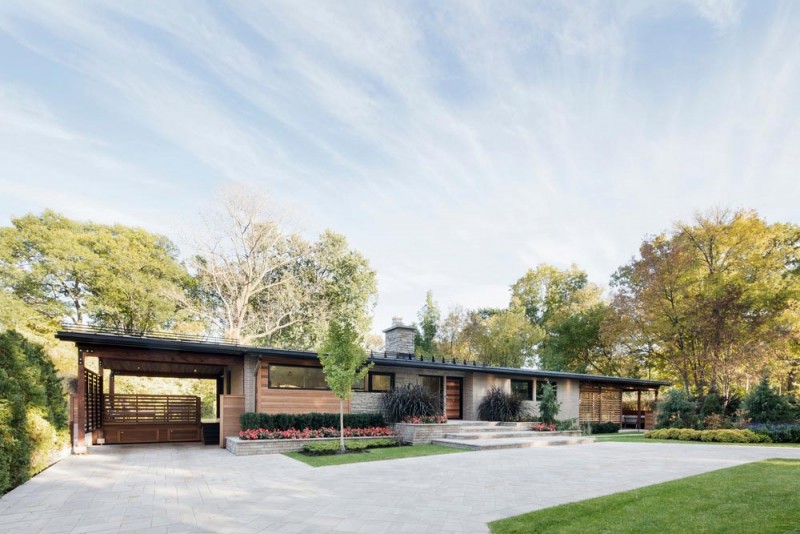
Prairie style assumes a horizontal arrangement
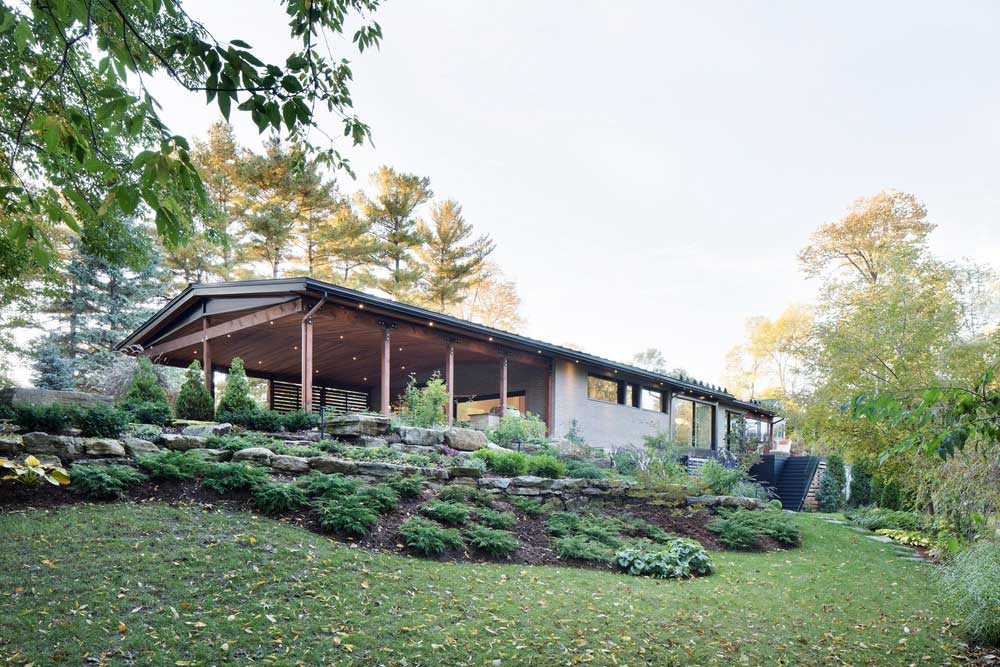
The natural lowering of the relief allows the construction of the lower floor
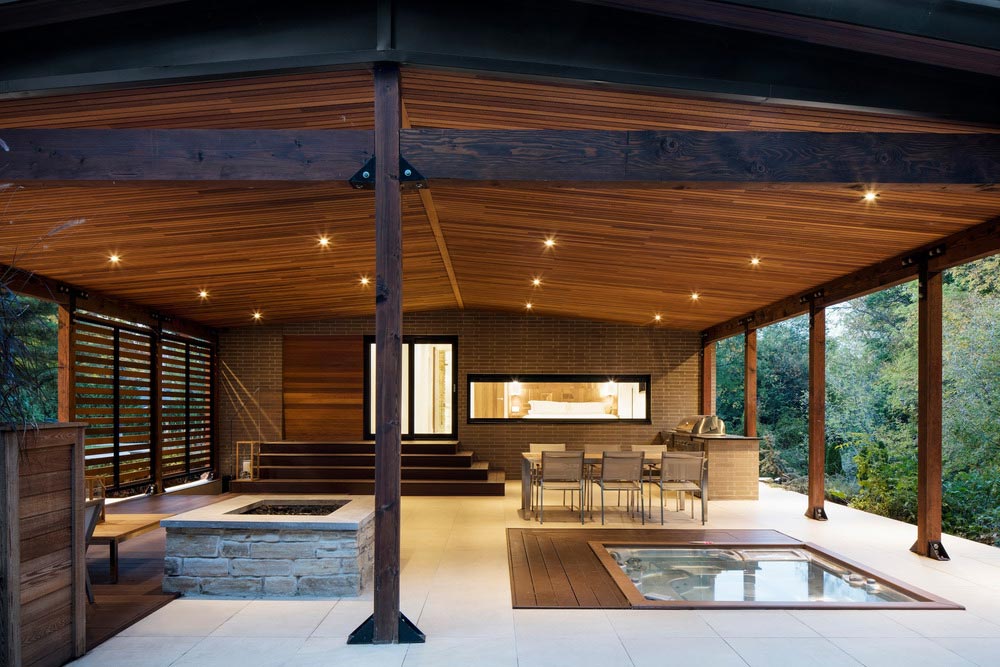
Hearth as the main element of the interior

Terrace increases the space of the house
The main detail of the interior is the stone hearth, which was built together with the house itself 60 years ago. The architects tried not to discard what turns a residential building into a home. The rooms naturally flow from one to another, which is fully consistent with the external appearance of the building. Large openings give plenty of light and a good view from every room, and the view from the living room, where the glass walls open onto the back garden, is especially good.
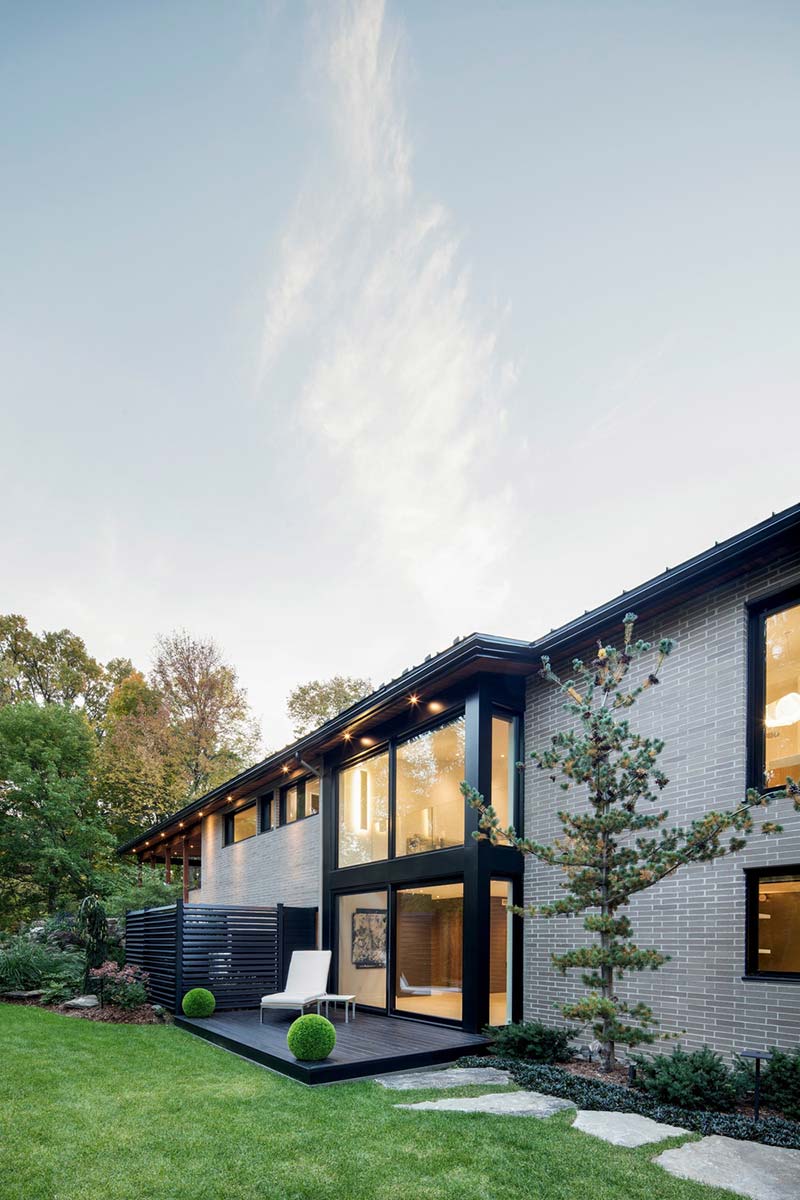
There are two floors at the back of the house.

Large windows bring in a lot of light

Kitchen in light color

Light color visually enlarges the space

Panoramic window at the entrance to the sauna
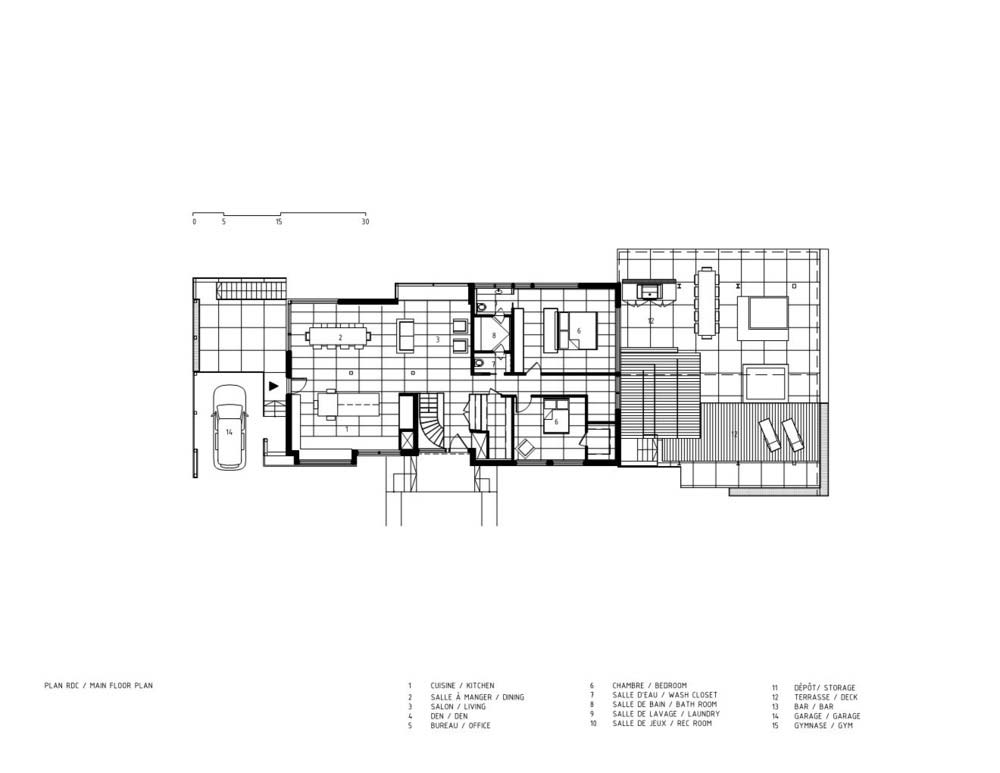
house plan
There is nothing revolutionary in the reconstruction of this house. It’s like a declaration of love for the owners of the old house, and architects for the historical style. This is what a refurbishment project should be – combining the new and the old in equal parts. Everything indicates that this house will stand for another 60 years, and possibly much longer.